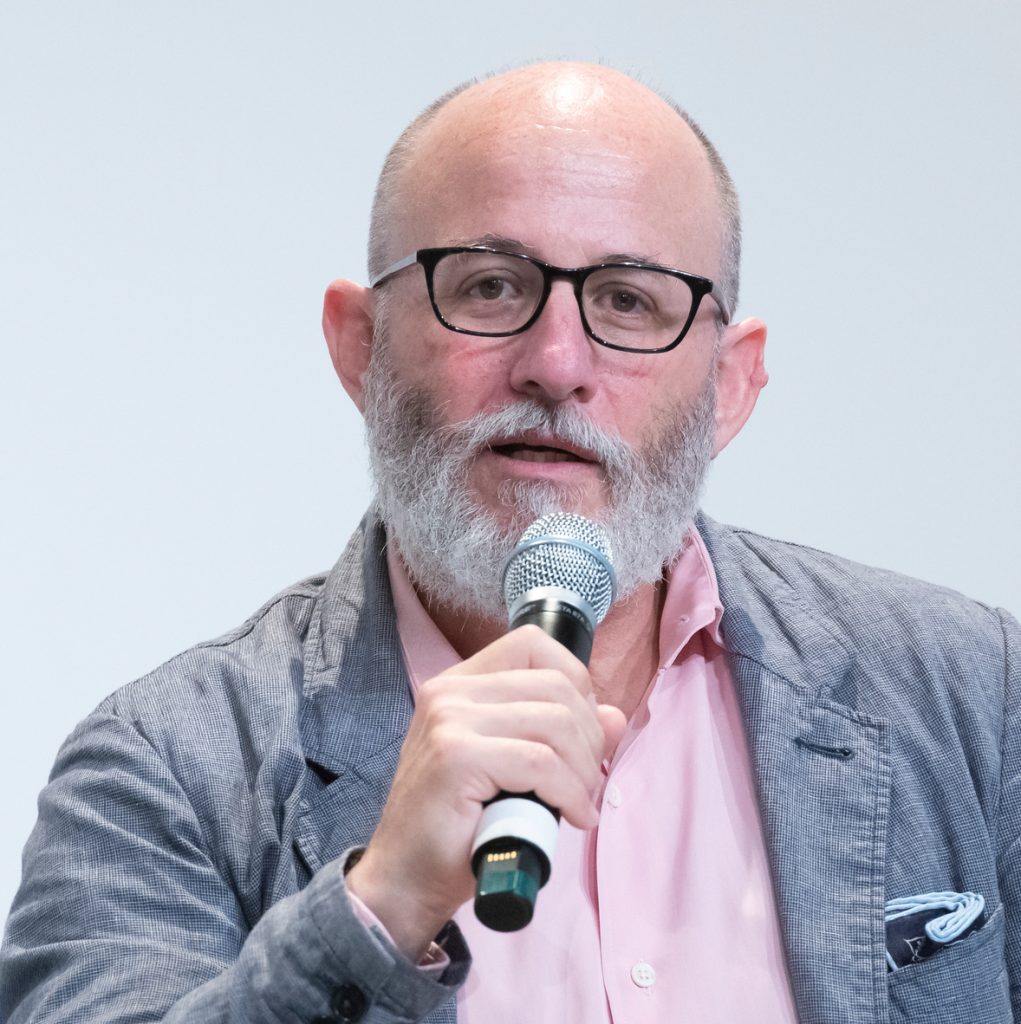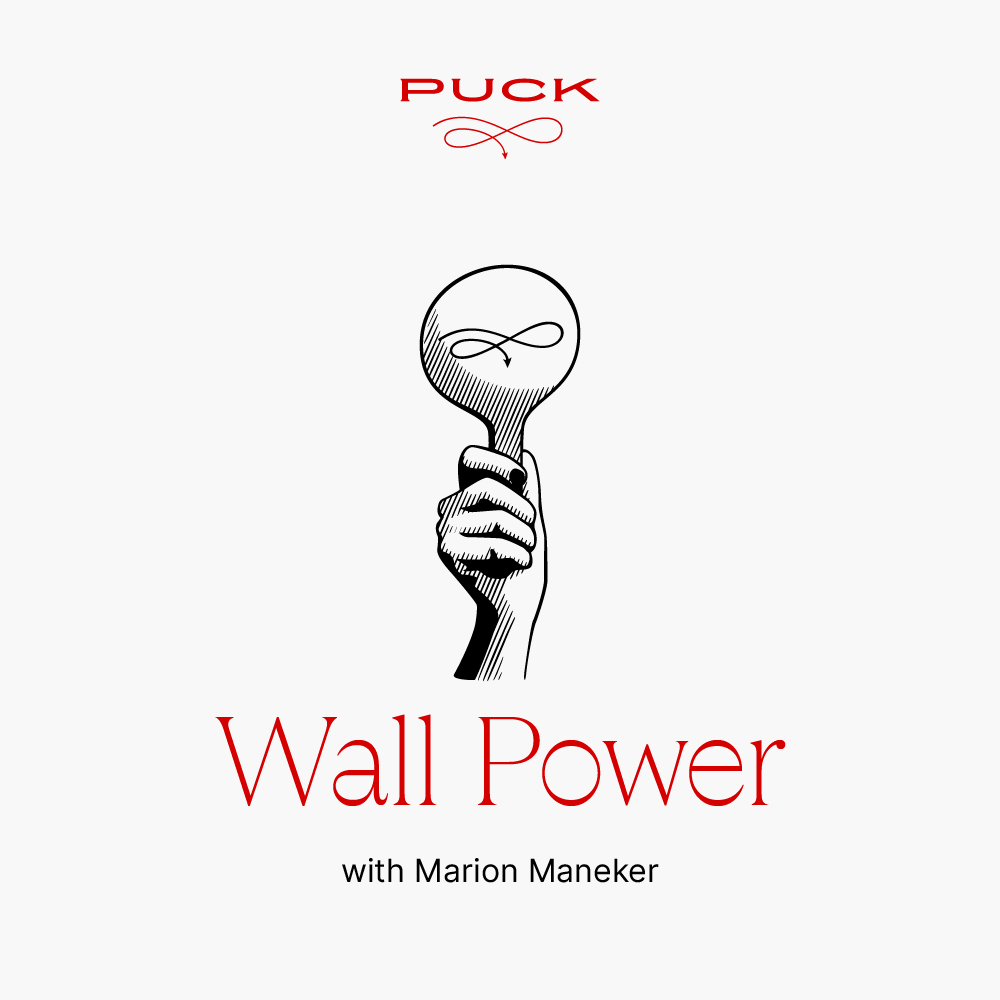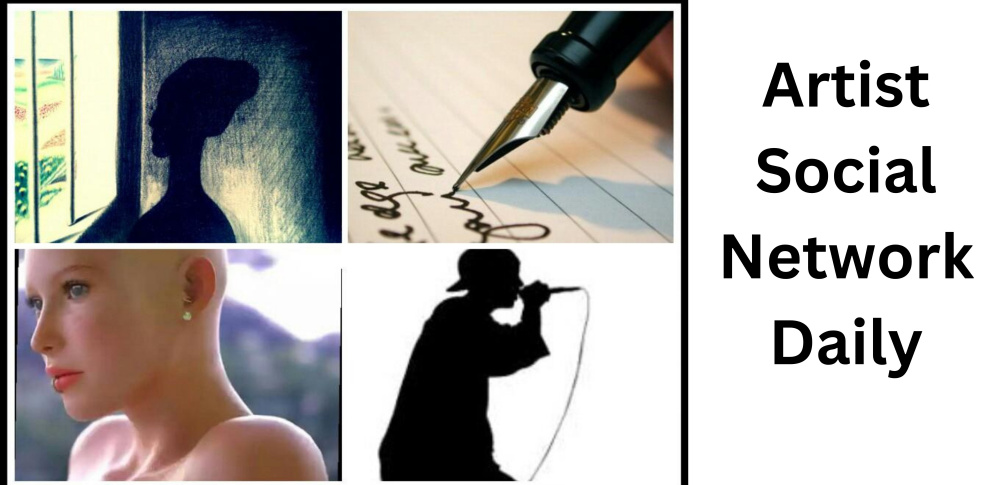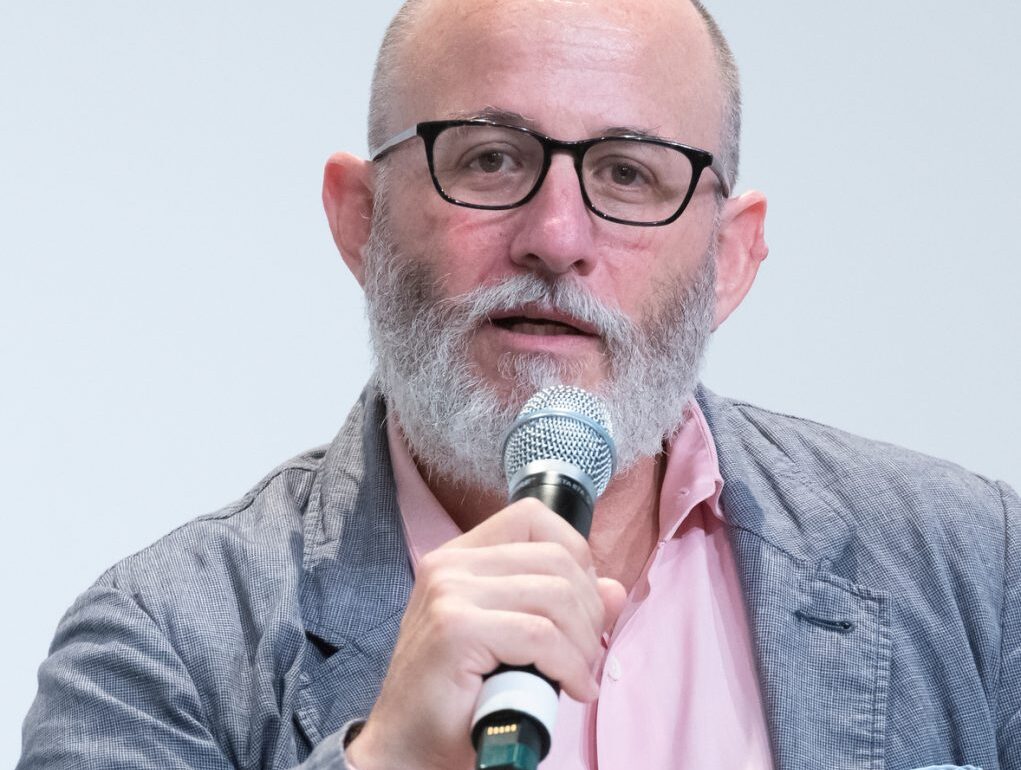 Marion Maneker
Marion ManekerArtists should not be starving anymore, based on estimates that put annual revenue in the global art market in the sixty-five billion-dollar range. Art might be big business, but coverage of art tends to look past the dollars in favor of personalities and, well, art.
Which is why I’ve been charmed this past year by the “Wall Power” newsletter that seasoned journalist Marion Maneker writes for the Puck media company. Maneker can tell a story–a recent edition went into great detail about the hows and whys of the dye transfer process in photography. But he always connects his work to markets–auctions, art fairs and so on–and so soon I found myself on the Phillips Auction website confirming that, indeed, the William Eggleston dye transfer prints he was writing about were up for sale and way out of my price range.
Maneker, who spent his early career in book publishing as well as as a features editor for New York magazine before developing his specialization in the art market, is relatively new to Puck, having launched “Wall Paper” about a year ago. But it instantly became essential reading for anyone interested in art markets. We corresponded via email.
Why did Puck get into the art-coverage business?
It was a happy accident. I was a Puck subscriber because of William Cohan and Julia Ioffe, both of whom I had read regularly in other outlets. At one point in early 2024, I was working on a project. I read in the Wall Street Journal that Puck had hired a new CEO, Sarah Personette, and was planning on expanding into similar projects. I also knew that Puck’s co-founder, Jon Kelly, was a subscriber to my Artelligence substack.
It was too early in Puck’s development to pursue the project. But Jon was interested in my subscriber base and proposed that I join Puck. I don’t think Puck was actively seeking to get into coverage of art and the art market, though our executive editor, Ben Landy, had been thinking about how to tackle the subject before I showed up.
I generally prefer to work alone and enjoy having a great deal of freedom to do things as I see fit. Although there were a number of very good reasons to join Puck on the operational side—we have very talented editors who come from the same journalistic background that I do, our marketing and technology people are world-class and far above what I could have attracted to working with me alone, and our commercial team is superlative with access to the biggest and best advertisers—that’s not really what tipped the balance for me. I joined Puck because I knew there was a strong desire within the industry to be taken more seriously by the mainstream media and as an industry.
At Puck my coverage stands alongside Matt Belloni’s view of the entertainment business, Lauren Sherman’s take on the business of fashion, Dylan Byers’ media obsession, William Cohan’s access to the most important people in finance and Puck’s take on politics. (John Ourand’s sports coverage would commence after I joined.) I wanted my views on the art world to be treated in the same vein and seen by readers, not as a remote, esoteric world, but as a business just like those others, driven by personalities and ambitions. And I knew many of my readers wanted to be covered in the same way, too.
I had hoped that Puck would give my work greater visibility to the rest of the media, and the art world would be flattered to be treated as a peer of these other industries. I have to say, in all honesty, that it has worked out far better than I could have hoped. The Wall Power franchise immediately found a substantial number of subscribers from within Puck’s readership and many of my 33,000 subscribers to Artelligence came over. The demand from subscribers was great enough that we decided beginning this January to expand to four days a week. To do that, I needed help and we hired Julie Brener Davich who also writes for Wall Power. She worked at both Sotheby’s and Christie’s and has experience as a journalist. And that’s what we want at Puck, people who were practitioners or such longtime observers of an industry that we know how the industry thinks about its own world.
I also wanted to be able to expand our coverage to other types of objects of cultural property that many of Puck’s readers might find as, or more, relatable as art. Bringing Julie on should help us expand our coverage of the luxury and collectibles market—a bigger and bigger presence at auction and in the other venues where art is sold.
The art market is a $65 billion or so industry but there is at best scant and erratic coverage of it as a business and asset class with one exception–you. Am I correct in thinking this and if so, why do you think that’s the case and do you see it changing?
I would not say that I am the only one who covers the art market as an industry or understands that art can be an asset. Though we should not think that just because some works of art can be treated as assets that art itself is an asset class.
I think that’s a common mistake people make when they see high-value art and assume that all art is very valuable. What makes art valuable is different from what makes art, well, art. Sometimes great art is also very valuable. But not always.
What I will say is that I am one of the few observers that does not think art is a separate realm. It is an industry affected by broader economics and other cultural shifts, including politics. That doesn’t mean that what artists do can or should be reduced to politics or economics.
If your question is why do I write about the art world in the way that I do, there are two different answers. The first is simply my personal interests. I am interested in industries, how they operate and who makes the consequential decisions. I try to approach those persons with empathy and detachment. Why do they do the things they do? What are their goals? How can we measure their success? The second is that I just like the art. It’s an interesting combination of ideas and emotions, vanity and aspiration, ambition and the sublime. I’m not an art critic and you’re not going to read me to understand the art better. Though Julie and I aspire to give you enough background to engage with the art on your own terms.
If your question is why isn’t there more coverage like Wall Power? I would say that the art market rose in prominence at the same time that media and journalism was declining. There’s no valuable advertising base which is why you see the kinds of coverage that is out there. It’s far too easy to lampoon the art world because it plays into the public’s prejudice and there’s no constituency of advertisers to fear. Gallery and auction house ads are not going to disappear from The New York Times if they write tendentious stories. Those gallery and auction house ads disappeared a long time ago.
There’s an added issue that many writers who are attracted to art are only interested in the art and in writing about what they like. There’s no detachment. Conversely, because of the way the art world talks about art—and some prevailing myths about the art market being riddled with money laundering, etc.—serious journalists tend to be deeply suspicious of the art world. So they stay away. It creates a diminished talent pool.
That brings me back to my answer above. Bringing art-market coverage to Puck was a way to expose more of Puck’s readers—who, as leaders in the industries, are potential buyers of art—to how the art world works. It was also a way to address the business model problem. Many people in the entertainment world collect art; many people in the fashion world are interested in art and artists; lots of folks in the financial markets are interested in acquiring art. And, I’ve discovered in the last year, many people in the art world are excited to have access to great writing and insights into finance, entertainment, media, fashion and politics.




How do you decide which art fairs to cover and why?
I wish I could give you a formula. I go to Frieze in London and Los Angeles. Art Basel in Paris and Miami. Julie went to TEFAF (The European Fine Art Fair). We obviously attend the fairs that take place in New York. Our constraints are money and time—but also the broader question of what are you covering when you cover an art fair? A business reporter isn’t going to cover a day at the mall unless something extraordinary happens. Most art fairs try hard to be novel experiences but there are so many of them it is really hard to think of what the “news” is at any one particular fair.
Puck’s journalism is first-person and informed by our firsthand knowledge of the industry. So, I think we go to fairs because our reporting is based on our personalities and it is good for us to be at the fairs and accessible to people. Julie and I encourage people to get in touch with us directly and definitely to introduce themselves when they see us at art fairs. So we have to go to art fairs to be available.
There’s also a lot of downtime at an art fair. So we have to balance how much either of us will get out of any fair in terms of the time we spend there and the money it costs. Remember, we’re journalists; the days of big expense accounts are over. And, in general, though this isn’t an inviolable rule, we prefer not to take paid press trips.
Before Miami, Chicago was the dominant art fair in North America, but that obviously changed. Now Frieze owns Chicago, as another unit in its global art fair race with Basel. How do you see Chicago fitting into the firmament now and in the future both as a market and as an art fair?
As the second city in America and the capital of the heartland, Chicago has been an important center for collectors. Some of that has been diminished by the growth of Los Angeles and Dallas as major multi-industry and financial centers. I think we will have to wait until Frieze finds a new owner to see where Expo Chicago fits in as a fair. I assume Chicago will continue to have important collectors. Equally, I am sure galleries will want to come to Chicago to establish and maintain relationships with collectors there. But traveling to New York, London or Paris to visit galleries and art fairs will also continue to have its own appeal.
How do you see the art market evolving, in terms of apparatus over the next five years or so, as it relates to galleries, fairs and auctions?
I try not to make predictions. We’re at the bottom of a two-and-a-half-year decline in art sales. Many galleries expanded to multiple locations in that period and before. There’s a lot of talk in the art market that a number of galleries have cash-flow constraints. What happens there—whether the market picks up in time for these galleries to pay their bills or they close—is anyone’s guess. And, of course, art fairs and other services depend upon the galleries for their own revenue. So, the ecosystem has survived longer than most people expected without widespread gallery closings. But a reckoning could come at any time.
Same question—how do you see the art market evolving—but regarding geographic centers…
The growth of collecting communities like the one in Dallas and in other cities around the country, along with the fact that it is not necessary for artists to be in New York or Los Angeles to be engaged with other artists and art in general, should mean a diminishment of New York’s role as the capital of the art market. And yet, it persists. Again, I don’t like to make predictions. And I’ve often found that what ought to happen isn’t actually what does happen. So I’ll stick to writing about what I see, not what I think will happen in the future.
This post was originally published on this site be sure to check out more of their content








